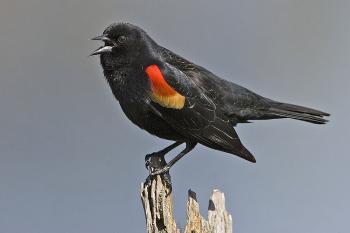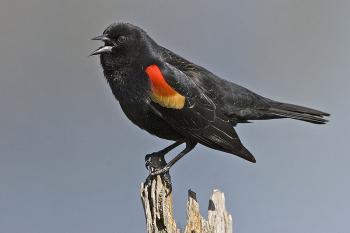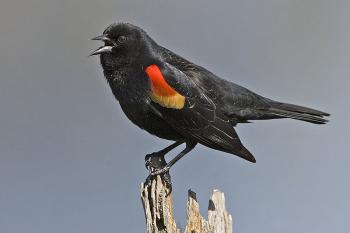COMMENTARY
New Year’s Eve and the first week of the New Year were met with downpours of birds and massive fish deaths across four continents. Experts were quick to offer explanations, though in these unusual situations that today’s science has not previously encountered, who is an expert?
There are many speculations about the reasons behind each incident. Some think the incidents are related; others think they are separate. I think we are jumping to conclusions too soon.
No “explanation” so far fits the situation perfectly. We need to acknowledge that science doesn’t know everything in the universe, and be humble while investigating phenomena. Otherwise, we are limiting our minds to things we already know, leading to these initial speculations that really cannot explain the incidents but nonetheless are regarded as expert opinions.
So far, the main theories for the fish deaths include disease, sudden temperature change, and decrease in oxygen level. Usually these are sound explanations for fish deaths, but not for the specific incidents recently. These deaths are massive, and all happened within a short time.
The fish didn’t die over an extended period of time, but just overnight, and in most regions where fish died, only one species of fish was involved. If biological and environmental causes led the fish to die, why did they all die in one day, and why didn’t other aquatic animals die?
As for the birds, most experts thought they fell to the ground because of fireworks, power lines, high-altitude hail, or lightning. What’s odd, however, is that the birds didn’t fall at the same time or shortly after the fireworks, high-altitude hail, or lightning events.
Regarding the high-altitude hail and lightning theory, why haven’t similar bird deaths happened on other days with bad weather?
In the Louisiana case, ABC reported: “Louisiana officials believe the birds fell to their death either late Sunday or early Monday after flying into a power line. The birds sustained injuries from broken beaks to broken backs. What prompted the birds to fly into the power line, however, is still a mystery.”
But why haven’t birds collectively flown into power lines before? Why didn’t they die just near power lines, but instead pretty much everywhere? What led the “officials” to come to such conclusion anyway?
As far as the Arkansas case is concerned, in which birds fell on New Year’s Eve and New Year’s Day, why did it only happen this year and not during previous years when people also celebrated with fireworks? Why didn’t it happen elsewhere? And why did it only happen to one species of bird?
The species that fell to the ground en masse in Arkansas was the red-winged blackbird. Males and females of this species look distinctively different from each other. Males are black with a patch of red and yellow feathers near the shoulders, while females are smaller and brownish-gray, rather like sparrows.
I didn’t see the birds in Arkansas in person, but in all the media photos that I have come across, including those that show government researchers examining the birds, I haven’t seen a single female red-winged blackbird. How come no one has questioned why?
Moreover, not all of the birds found on the ground were dead. If, like the experts told us, the birds had heart attacks or flew into buildings while being startled by fireworks, why didn’t they die in mid-air from a heart attack or by striking a building and then hit the ground? Or by first being struck by electricity, and then hitting the ground?
Suggesting that the birds must have been extremely shocked, Susie Kesielke, curator of birds at the Los Angeles Zoo, told CNN: “Blackbirds roost communally in the wintertime, and they sleep more soundly than most animals.”
But if they sleep more soundly than most animals, shouldn’t some other tree-dwelling animals be the ones that were shocked awake, and then died?
Nick Nuttall, spokesperson of the United Nations Environment Programme (UNEP), reacted more like a responsible scientist. “Science is struggling to explain these things. These are examples of the surprises that nature can still bring,” he told Reuters.
Foreign Rains in the Past
In fact, much more bizarre things have been happening for centuries, as pointed out in an Epoch Times article on foreign rains.
According to the article, U.S. researcher Charles Fort (1874–1932), who collected about 60,000 clippings from newspapers, magazines, and other sources about unusual occurrences, spent years studying what are known as foreign rains. Throughout his career, he recorded rains consisting of crosses, coins, snakes, ancient Chinese stamps, blood, frogs, insects, cotton, oils, and other liquid substances.
In 1578, there was a downpour of large yellow mice in Bergen, Norway.
In 1873 and 1877, respectively, Scientific American reported that frogs covered Kansas City after a storm, and that it rained snakes in Memphis, Tenn.
In February 1877, a yellow, flaky substance fell in Penchloch, Germany. The substance was reportedly thick, had a fragrance, and came in the shapes of arrows, coffee beans, and round discs.
A study by Australian zoologist Gilbert Whitley recorded 50 fish rains in 1972.
In May 1981, Naphlion, Greece, became host to frogs that fell from the sky, apparently having traveled a long way—the species is only found in North Africa.
After a storm of frogs in July 1901, witnesses in Minneapolis, Minn., discovered that four streets were covered almost three inches deep in frogs, making it impossible to walk.
See more enigmas and what we can make out of them on the next page
On Oct. 23, 1947, between 7 a.m. and 8 a.m., fish fell on Marksville, La., striking several people and averaging one per square yard in places.
On June 28, 1957, small fish, frogs, and crayfish fell by the thousands during a rainstorm at the Magnolia Terminal near Thomasville, Ala. Many of the fish were alive.
In December 1974, during the course of several days it rained hard-boiled eggs over an elementary school in Berkshire, England.
In 1969, it rained flesh and blood over a large area of Brazil.
In 1989, wooden dolls with heads that were burned or cut off fell from the sky over the town of Las Pilas, Cantabria.
On Feb. 6, 2004, over 10,000 bramblings, a small bird, fell from the sky in Jiangsu, China.
On Aug. 18, 2004, fish fell on Powys, Wales.
On July 26, 2005, frogs not indigenous to the area fell onto the village of Odzaci, Serbia.
In 2007, it rained small frogs over Alicante, Spain.
On July 31, 2008, it rained blood (reportedly confirmed by lab analysis) in the town of Choco, Colombia.
In June 2009, tadpoles rained on Japan’s Ishikawa Prefecture.
Last year, on Feb. 25 and 26, a type of fish called spangled perch landed like rain on Lajamanu, Australia, about 200 miles from the coast. The fish were alive when they fell.
As reported by the media, scientists said that fish can be sucked up into the clouds by twisters, waterspouts, or tornados, travel with the clouds, and then fall down again, landing away from their site of origin.
However, there are no bodies of water nearby, and neither hurricanes nor tornados were recorded at the moment of or during the days prior to the anomaly in Lajamanu.
This theory also doesn’t explain why only a particular animal or object would fall from the sky. Why would a current of air only lift up all the frogs from a lagoon, for example, without taking the water, mud, algae, and other species from that very same ecosystem?
Some also try to explain the falling of man-made objects as objects falling from airplanes, but that could not have happened without people seeing the airplanes. It wasn’t until 1903 that the Wright brothers made their first successful flight, and airplanes were not reported to have been seen in any of the above cases.
Unusual for Some, Common for Others
As reported earlier in The Epoch Times, villagers in Yoro, Honduras, don’t view foreign rains as unusual occurrences like most of us do. They are accustomed to preparing containers like buckets and basins every year during the rainy season between May and July because fish rains are annual there.
The villagers even have a festival every year to celebrate the fall of the fish. It would start out like a normal storm, but when the rain stops, the ground would be covered with live fish.
“In 1970, National Geographic sent specialists to Honduras to investigate this curious weather,” reported the earlier Epoch Times article. “They found that the falling fish were all the same size—less than 6 inches—and were all blind. Researchers identified the species, but could not find record of it in the surrounding region.”
Moral of the Story?
In “Sou Shen Ji,” an ancient Chinese book of historical records, it is documented that in the Eastern Han Dynasty (almost 2,000 years ago), over 10,000 birds—the Chinese word which is a homonym for nobility—fought one another to death at the imperial tomb of Emperor Chong. The then emperor, Emperor Ling, died three years later. Soon after that, government officials started fighting for power, and the Han Dynasty ended, with China being divided into three kingdoms.
Ancient Chinese scholars thought that the birds fighting at the imperial tomb was a hint from heaven about future events.
Whether it is a coincidence or not, it is worth noting that so many strange events have happened at the start of this year. Whether the phenomenon is natural or supernatural, it might offer us insight into what the new year will bring.
Many scientists make their most groundbreaking and influential discoveries in their early years. It is likely because they were not constrained by their “expertise,” and therefore could think outside the box.
When unusual phenomena occur, scientists should seize the rare opportunity to make new discoveries, not rush to the conclusion and deem things explainable by already-known theories based on inadequate evidence
The Epoch Times publishes in 35 countries and in 19 languages. Subscribe to our e-newsletter.
.









Friends Read Free